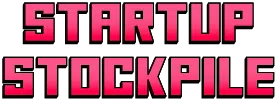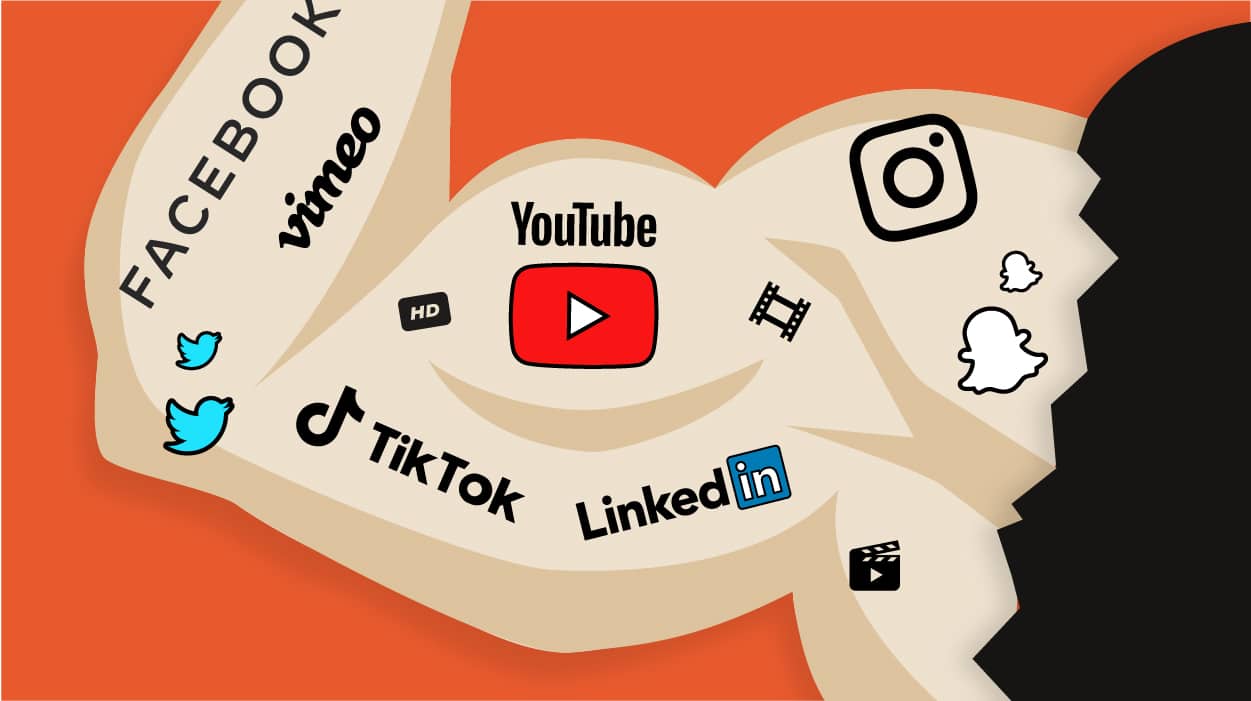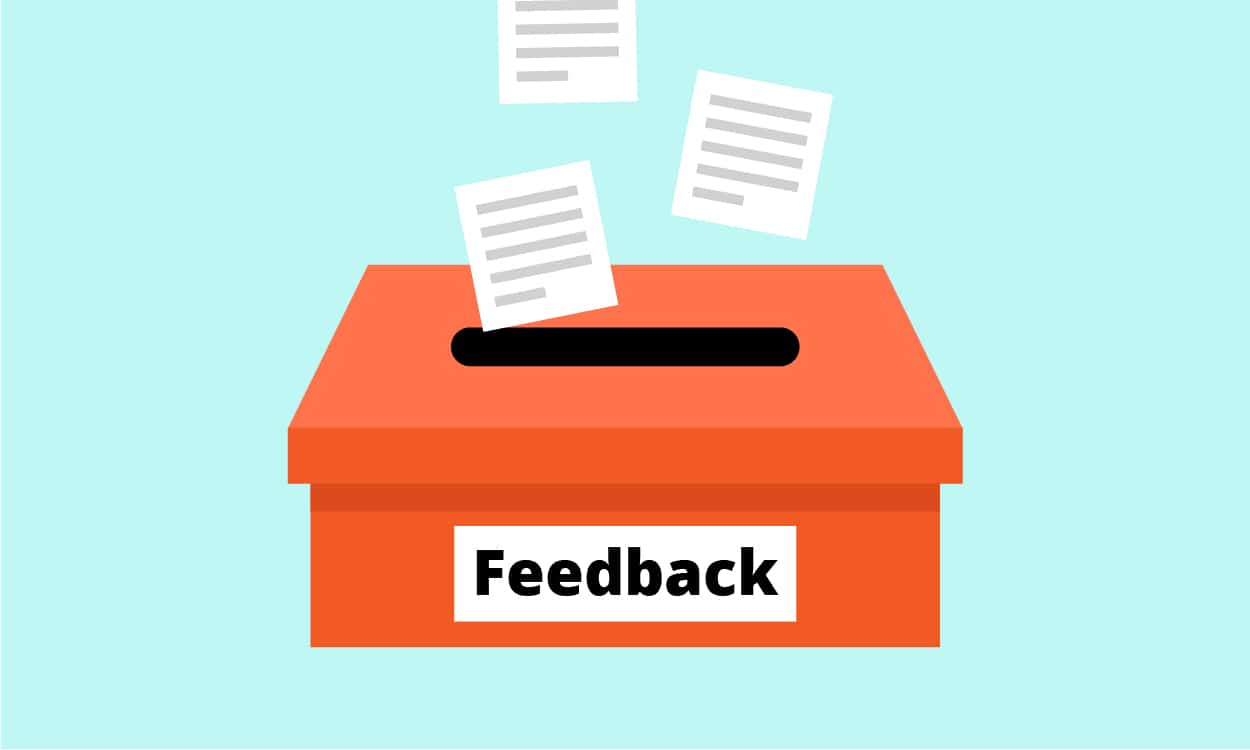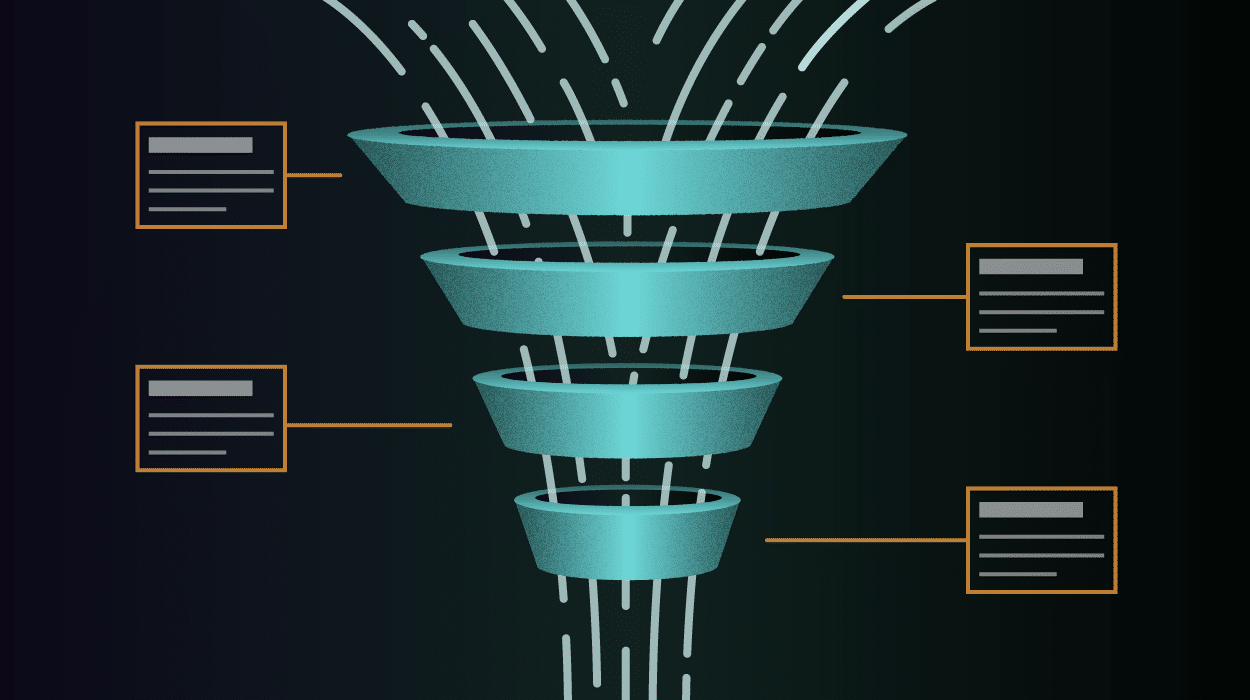What is a press kit?
A press kit (or media kit) is a mini portfolio that contains a professional representation of your business and its brand assets. Traditionally, press kits were sent to media outlets for promotional and PR opportunities. But today, businesses have digitized their press kits and made them accessible to the public on their website’s press page.
For startups especially, press kits are not just important for journalists, bloggers, and other influencers interested in writing about your business. They’re useful tools for potential clients, business partners, and investors trying to gauge your company’s credibility.
What should you put in your press kit?
Every press kit is unique, and the contents depend on your experience and the special elements of your startup. Figuring out what to put in your press kit requires looking at your business through the eyes of a journalist.
The information a writer needs to create a story about you includes some basic facts such as:
- Biographies of Staff and Leadership
- Photos
- Company History
- Recent Press Releases
- List of Industry Awards
- Other Noteworthy News Stories About Your Brand
- Image of Logo
- Answers to Frequently Asked Questions
- Contact Information for the PR Department
Why do you need a press kit?
Journalists often juggle multiple stories and are limited on time. If you make it easy for them to locate information on you, grab a logo or photo, and run with a story, you’ll have a much better chance of gaining free exposure.
It’s easy to miss out on opportunities. If you make it too difficult for the writer, they may highlight them to your competitor instead. Have your press kit ready to grab opportunities when they come along.
A press kit is good for SEO because it allows people to build backlinks to your site easily. You might also gain blog and social mentions. Making your digital brand assets easily accessible helps your sales and marketing teams and gives you internal documents to share with potential investors and clients.
A press kit also helps your startup look more professional by giving you a strong brand identity with clear messaging. Check out the real press kit pages below examples to get some inspiration on creating your own.
How do you set up a press kit?
It can be as simple as providing a page with your company’s logo and elevator pitch. Word of mouth is the most powerful marketing tool for every business. You want to make it easy for people to talk about your business. And that’s the goal of a press kit page.
We advise getting a simple press kit up as soon as possible. That way, if someone does want to write about your company, they can get the basic info and identity assets they need to do a good job. You can always make it fancier down the road.
Still not sure where to start? Below, you’ll find some awesome press kit examples you can steal.
Here are 14 real press kit examples for inspiration:
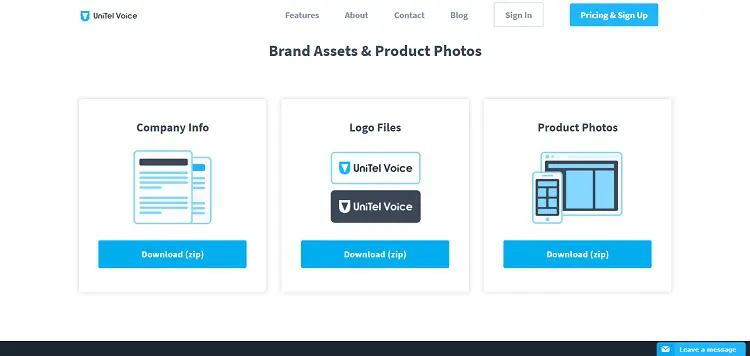
1. Unitel
Unitel’s press kit makes grabbing the resources you need to write about their brand easily. Note how they list a few rules for referring to their brand. This creates brand consistency no matter who refers to them or what coverage they receive. They then have three boxes offering company information, logo files, and product photos. A journalist can easily access whatever they need.
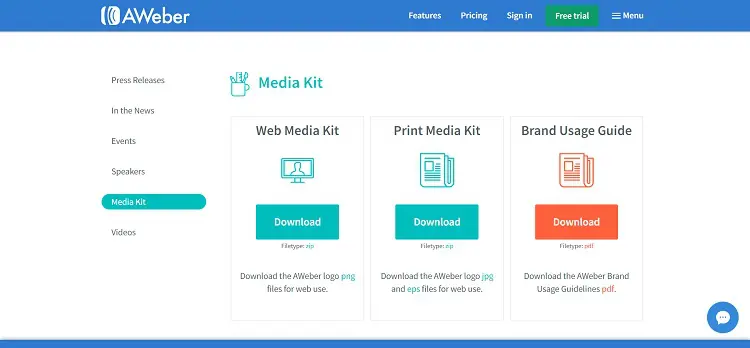
2. AWeber
AWeber’s press kit page offers different media kits for different purposes. Those wanting to publish something online about the company have a web media kit, and those wanting to publish in print offer a separate set of files. They also have a brand usage guide for clarity.
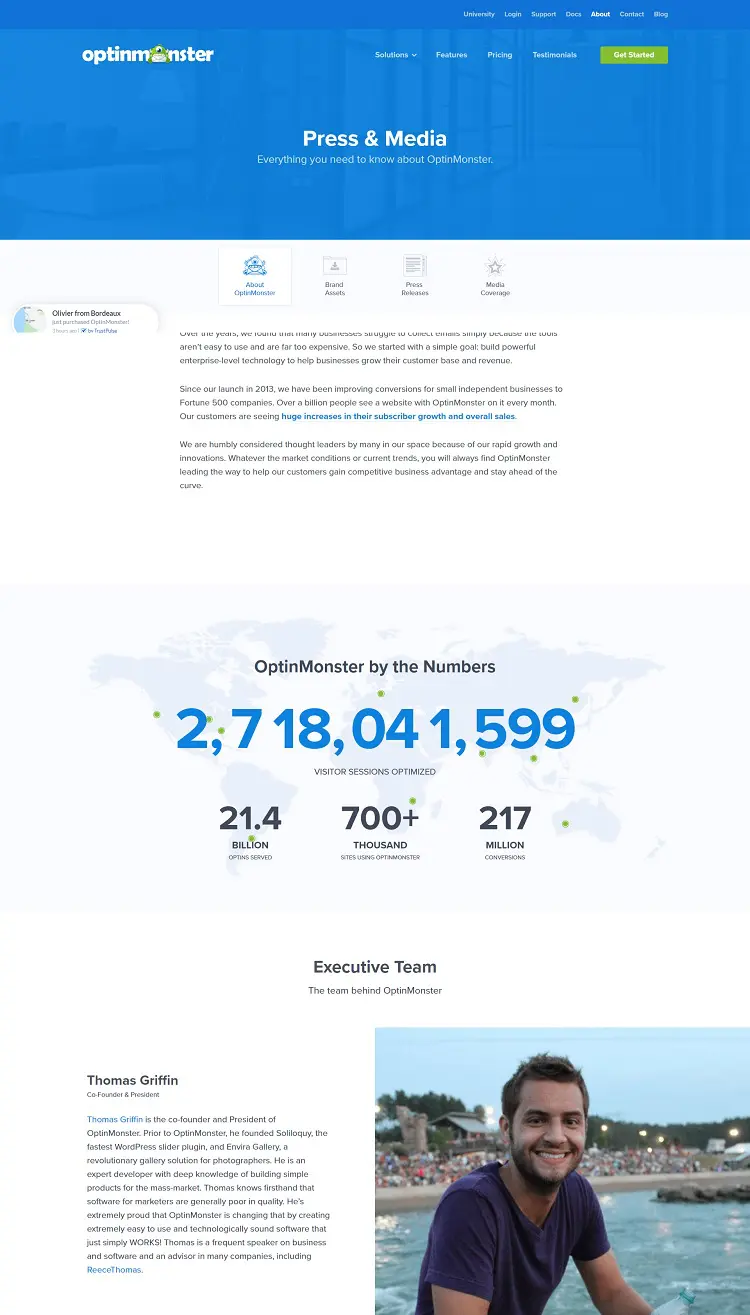
3. OptinMonster
OptinMonster’s press kit presents some basic facts on a web page and outlines some staff members. They also list some of the different areas of their press kit, including press releases and other media coverage. Reporters can get stats for the site in real time.
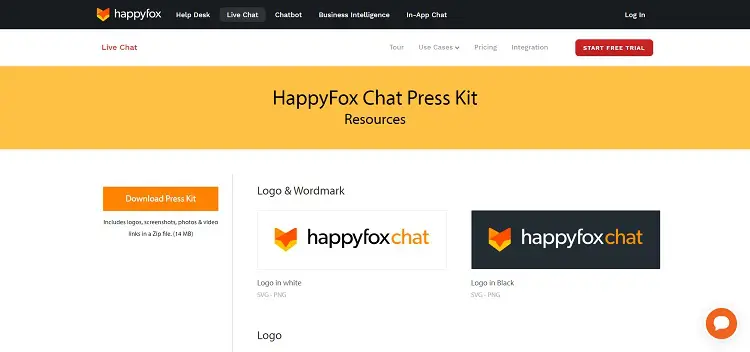
4. HappyFox
HappyFox’s media kit puts its logo at the top of its press kit page so users can easily find them. They then add a call to action to the left of the page with a button that reads, “Download Press Kit” and descriptive text explaining that the EPK contains logos, screenshots, photos, and a video.
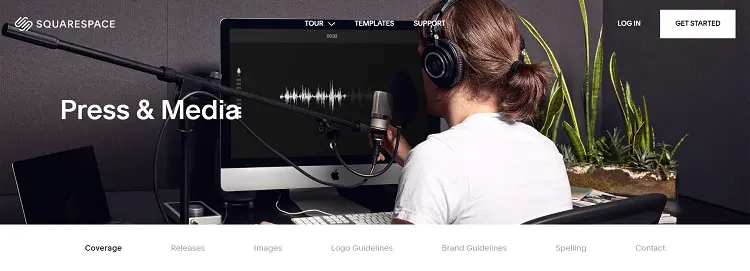
5. Squarespace
Squarespace press & media page opens with its most recent press coverage. This could attract new media outlets or provide journalists with ideas of what’s already been covered. They then offer tabs in their navigation bar that let people download press releases and images or get brand and logo guidelines.
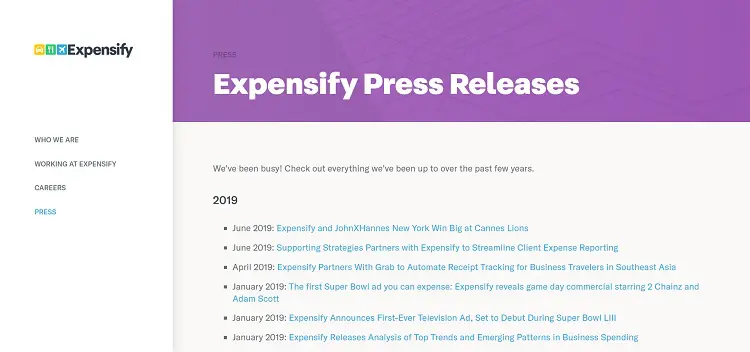
6. Expensify
Expensify’s press kit gets right to the point and shows what they’ve been up to by listing a full collection of their recent press releases. For journalists looking for a story idea about their company, the details on this page offer much insight into advances within the company. There are links to learn more about the company and get images and contact info.
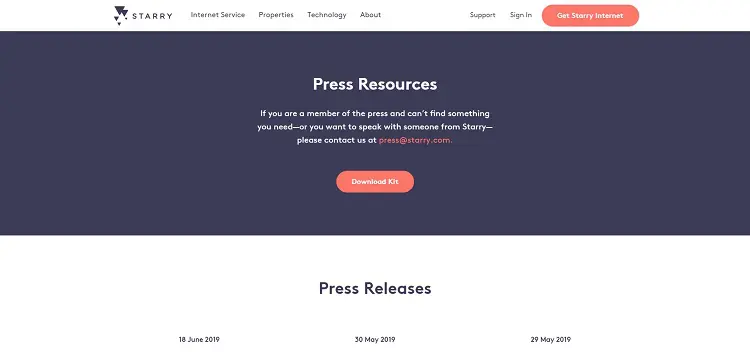
7. Starry
Starry’s press kit has a page dedicated to press members looking for information on their brand. This internet service startup company has a kit you can download, but they also list an email address in case you have additional questions. Under the kit, linked are press releases ordered from newest to oldest. You’ll also find product photos, leadership info, and headshots.
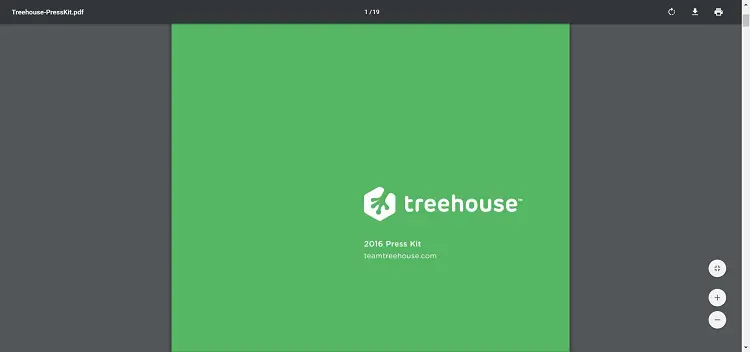
8. Treehouse
Treehouse offers its press kit in an easy-to-download PDF document. You’ll learn to use branding images, name and company details, and history. Embedded links take you to their resources, such as logos and images.
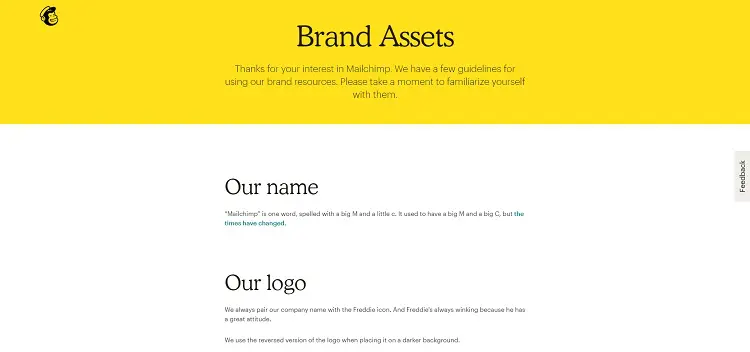
9. Mailchimp
Mailchimp places everything on a single press page, including loose guidelines for using their images and brand name. As you scroll down, you’ll find variations of their logo, explanations about their name and how to use it, and the HEX codes for their brand’s color palette.

10. Close
Close’s press kit does something unique with its online press kit by offering screenshots showing examples of its logos and names. Visitors can also download a logo page with PNG and press kit files, which work for online publications and printed materials.

11. Help Scout
Help Scout features a downloadable press kit and then offers specifics such as a color palette, logos, and photos of Help Scout’s “team and culture.” There is no doubt about how users should refer to the brand.
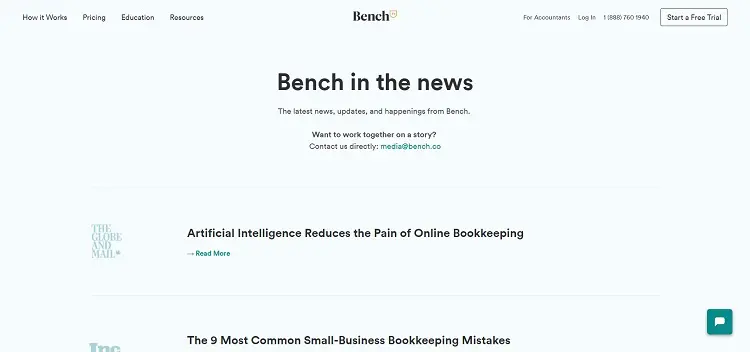
12. Bench
Bench’s press page offers a list of news and press releases. However, they also place a reminder at the top that they are happy to work with reporters on stories about Bench and invite them to contact the brand for more information. This provides an opportunity for a customized press kit for each journalist.
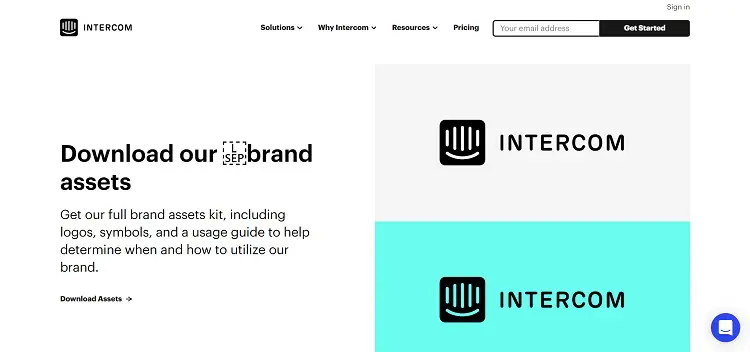
13. Intercom
Intercom’s press page offers assets at a glance by placing logos to the right of the download link. If you only need a quick image, there is no need to download the entire kit. You can download a full press kit and get more information if needed.
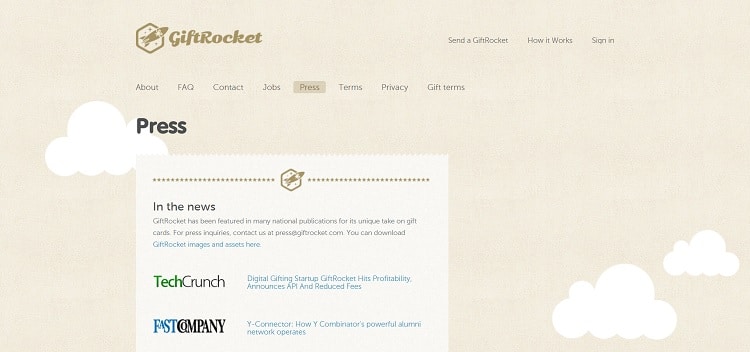
14. GiftRocket
GiftRocket offers a press page listing mentions in other media outlets and links to their press assets. They also list their email so users can contact them if they need something specific for a story.
Ready to set up your own press kit?
Having a press page makes your business look more reliable and trustworthy and makes it easier for bloggers, journalists, and other influencers to write about your startup.
Plain and simple, an electronic press kit is an essential tool for getting PR, building backlinks, and generating buzz.
So, set up your press kit and ensure it contains everything anyone would need to tell the world about your amazing business.
Editor’s Note: The article is part of the blog series Grow Your Business by the marketing team at Unitel, the virtual phone system priced and designed for startups and small business owners.
